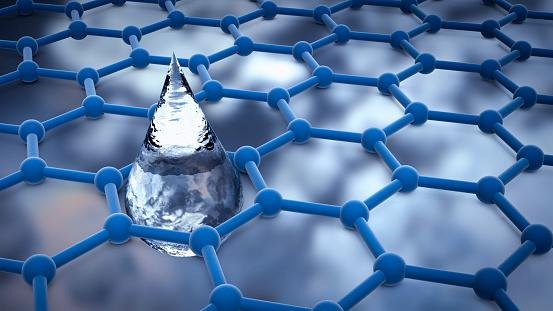Researchers at the Massachusetts Institute of Technology (MIT) made an unexpected discovery while investigating why water evaporation rates in sponges are so high that they cannot be explained by the amount of heat (thermal energy): light can directly cause evaporation without the need for any heat source.
Although evaporation is one of the most ordinary physical processes on our planet, there was one complex question that mathematicians could not solve: Why is the amount of heat absorbed by water during evaporation not always the same? Who is responsible for all the lost fluid?
In a study conducted in 2022 at Jilin University in Changchun, China, scientists managed to reach an evaporation rate 278% higher than the critical point of liquid water, but still no explanation was given other than the thermal paradigm. Realizing that another force must be responsible for this result, MIT researchers used a heatless stream of photons to evaporate liquid water.
How did researchers achieve the evaporation of liquid water with light?
To test the evaporation effect, the authors used hydrogel, a polymer that works like a sponge to retain water. They then protected the material so that it would not conduct heat by exposing it to different colored lights., and water loss was measured. However, they suggested that “a photon can separate water clusters from vapor-water interfaces.”
To test the hypothesis, the team heated a light-free hydrogel using electricity. This amount of water evaporated by heat alone did not exceed the thermal limit, but when they turned on the light and heater, the heat limit was exceeded. This phenomenon was called the “photomolecular effect”.
What are the practical applications of photoevaporation of liquid water?

Researchers are currently working on a project at MIT’s Abdul Latif Jameel Food and Water Systems Laboratory to make existing solar-powered desalination systems more efficient. They also won a grant to investigate the implications of this phenomenon for climate change modelling.
According to first author Yaodong Tu, there are two steps in standard desalination processes: converting water into steam and then condensing the steam into fresh water. However, with the application of research findings, “We can achieve high efficiency on the evaporation side”It gives a guarantee to the mechanical engineer.
According to Professor Gang Chen, lead author of the study, there is the potential to increase the limit of water produced through solar desalination (currently 1.5 kilograms per square meter) by up to three or four times by using light alone in the process. “This could lead to really cheap desalination,” the professor concludes.
Follow the latest developments in technology and science at TecMundo. If you want, take the opportunity to learn the theory that explains the hidden state changes between liquids and solids.
Source: Tec Mundo
I’m Blaine Morgan, an experienced journalist and writer with over 8 years of experience in the tech industry. My expertise lies in writing about technology news and trends, covering everything from cutting-edge gadgets to emerging software developments. I’ve written for several leading publications including Gadget Onus where I am an author.












